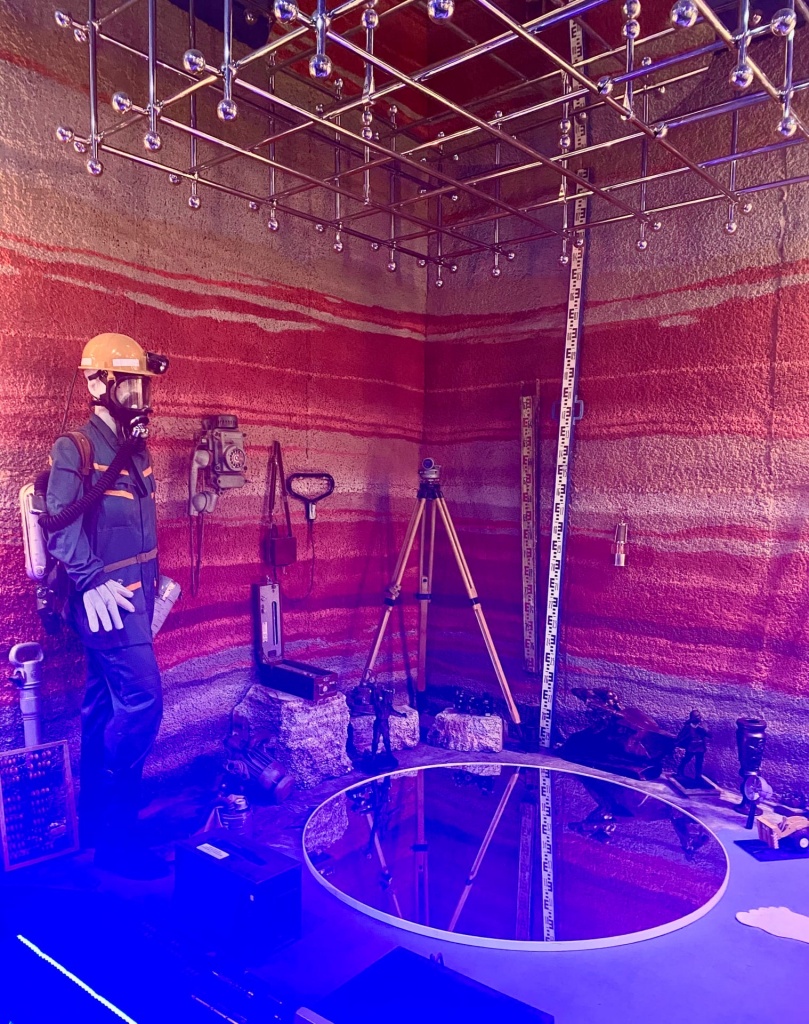
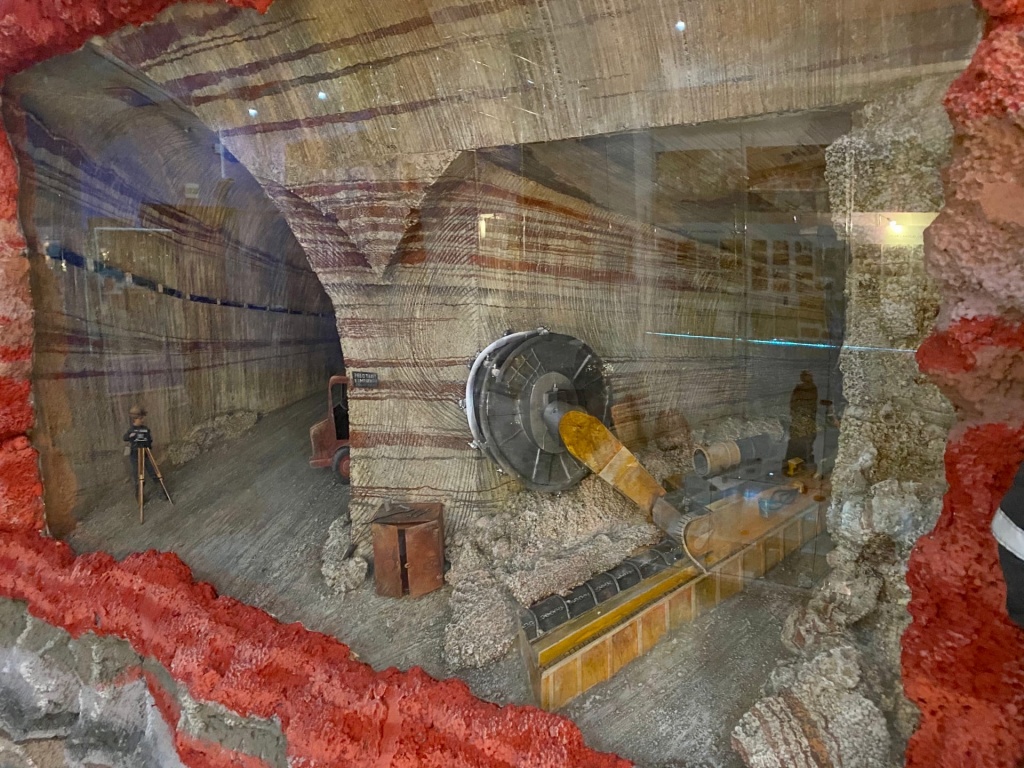
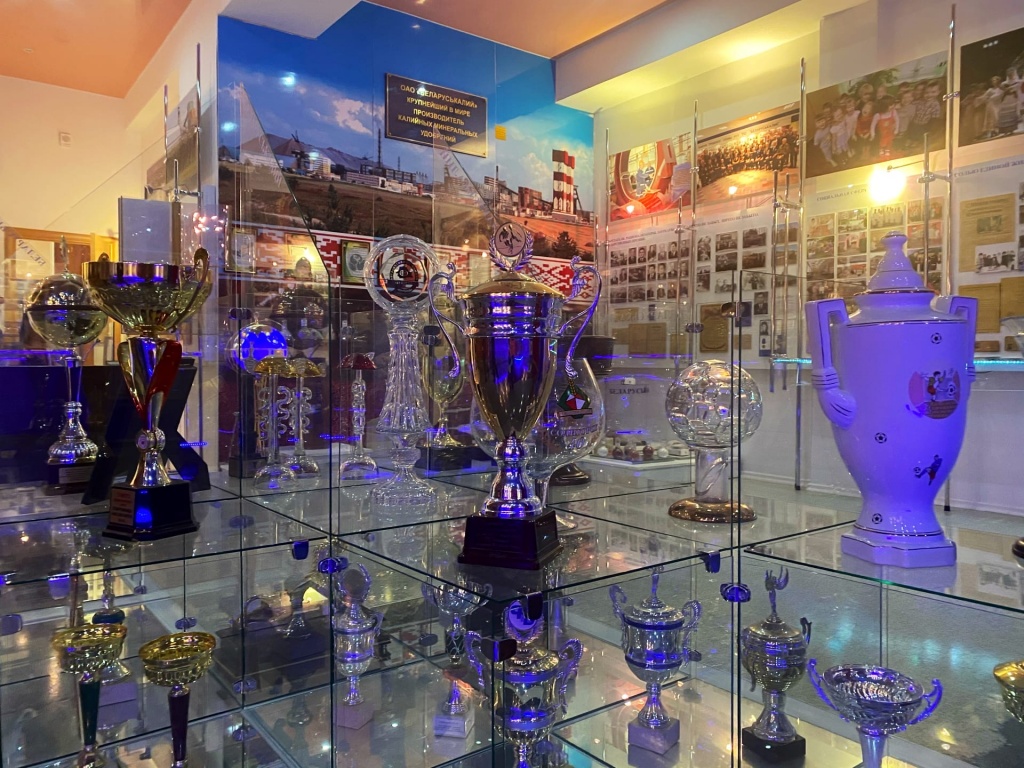
The museum area of 102 m² houses over 2,000 showpieces. Materials presenting the history, production, economy and social sector are grouped into 14 sections: Geologists, Pioneer Builders, Construction of Potash Plants, Labour and its Heroes, 90s, Occupational Health and Safety, 21st Century: New Projects, Innovators, Veterans of the Great Patriotic War, Social Services, Sports. The museum showpieces include work clothes, personal protective equipment, mining tools, samples of rock and mineral fertilizers, photographs, letters, books, documents, awards, and souvenirs.
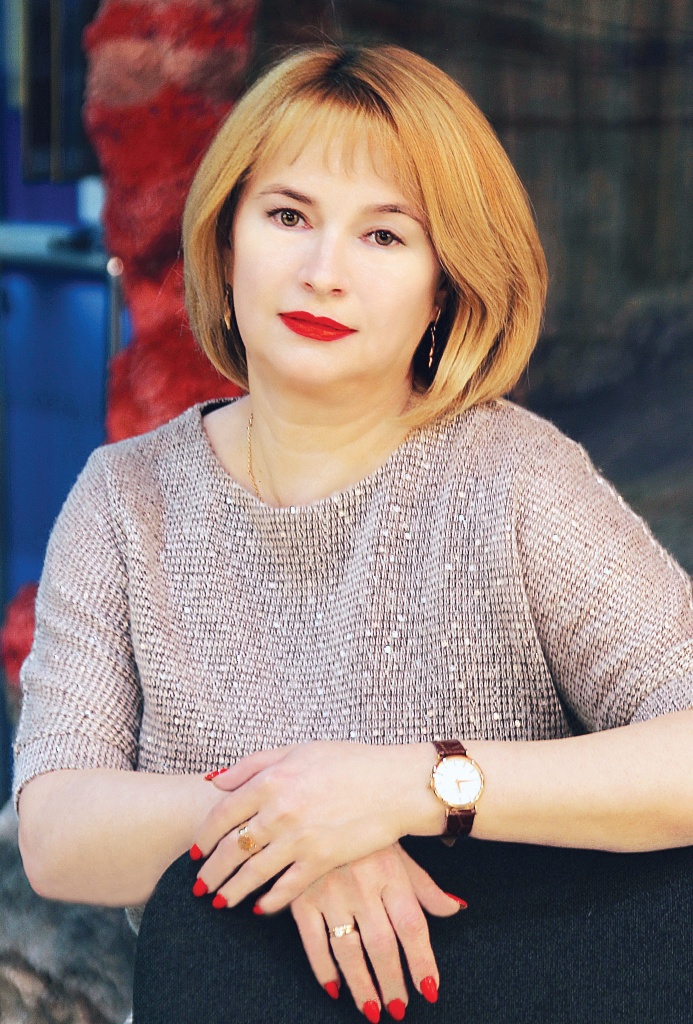
The podium corner, simulating a three-level mine shaft, is of genuine interest to most visitors. Two circular mirrors, arranged in parallel, reflect the "mine walls" and visually expand the space, creating the effect of a deep mine shaft.
Образцы выпускаемой продукции размещены в стеклянных цилиндрах на многоуровневом подиуме. Цвет стен переходит в цвет потолков. Пол, как зал, разделен цветовой диарамой и имеет один цвет со стенами и потолком.
Additionally, the museum uses audio and video materials, including films that give the main stages of fertilizers production and the company philosophy.
The youngest visitors can enjoy a sylvinite production episode of the edutaining TV show "Ekoznaiki" produced by the national TV channel STV. The museum is in step with the times, giving the history a modern twist.
In the future, thanks to the latest projection technologies, the expositions can be supplemented with virtual tours and augmented reality mockups.
The museum purposefully collects and stores materials and items of historical, scientific, artistic and moral values for the company employees, pursuing the aim to become a museum of history of the Belarusian potash industry.
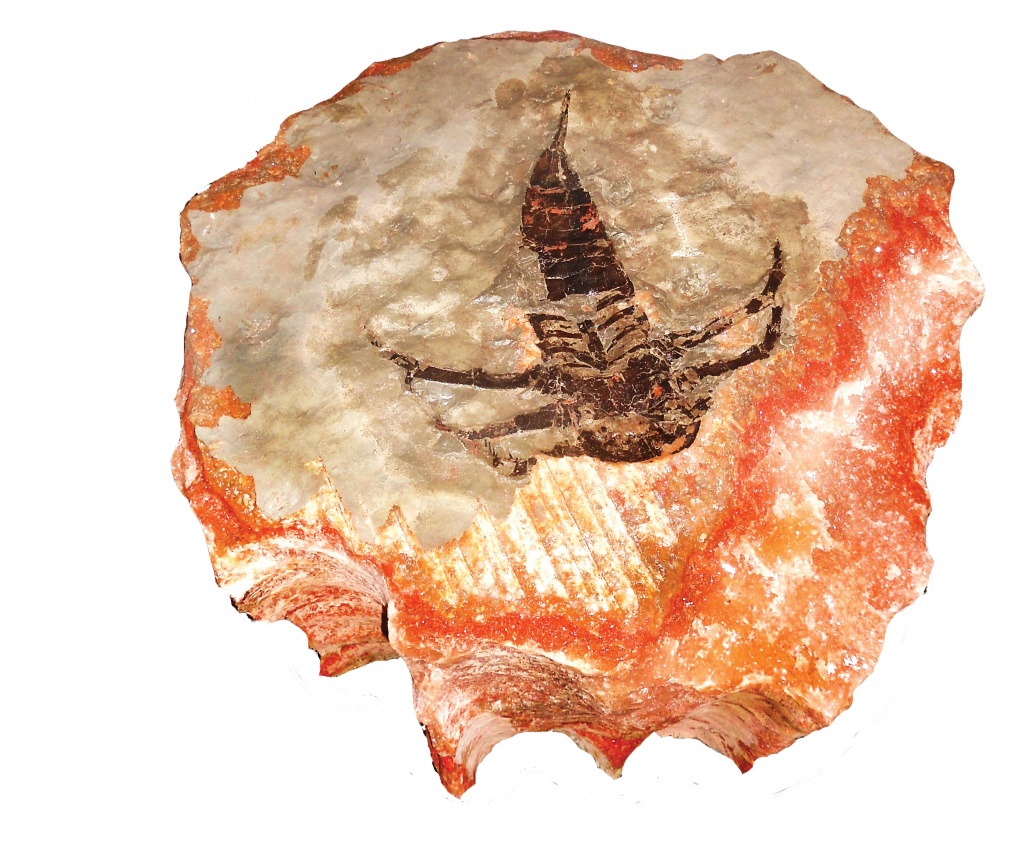
Unique showpieces of the museum are the fossils of the most ancient animals – sea scorpions.
Three 350–360-million-year-old representatives of the Paleozoic Era "inhabit" the museum. They are the same age as the deposit. The largest arthropod, 34 cm long, was found at the mine of PU 3 in July 2012. Among the rare finds are fragments of an ancient fern found in the depths of the mine of PU 1 more than 10 years ago.
In 15 years, the museum has hosted more than 2,000 public events, and more than 1,500 people visit it every year.
Today, the museum is a historical, cultural and educational centre for the enterprise, the city and the district. It is open for young workers of the company, delegations and guests of the town, schoolchildren and students. Oleg Novitsky, a cosmonaut and commander of the spaceship "Soyuz TMA 0,6M", a native of the Minsk region, and Yuri Bogomolov, the son of a famous academician, one of the discoverers of the Starobin deposit of potash salts, were among the honoured guests of the museum.
Museum address:
5 Korzh Street, 223710, Soligorsk,.
Tel.: 8 (0174) 29-87-56.
Open hours: 8.00 a.m. to 5.00 p.m.
Days off: Saturday, Sunday.
Everyone can visit the Museum. You just need to make an application by phone: 29-87-56 or 29-84-45.
At the moment, the visits are limited due to the current epidemic situation. But the museum is waiting for its visitors when the situation becomes stable.
The opening ceremony of the Museum took place on May 5, 2005. It was timed to coincide with the 60th anniversary of Victory in the Great Patriotic War. The war veterans and former workers of Belaruskali who were the first to write bright pages in the labour chronicle of the company were the first visitors to the Museum.
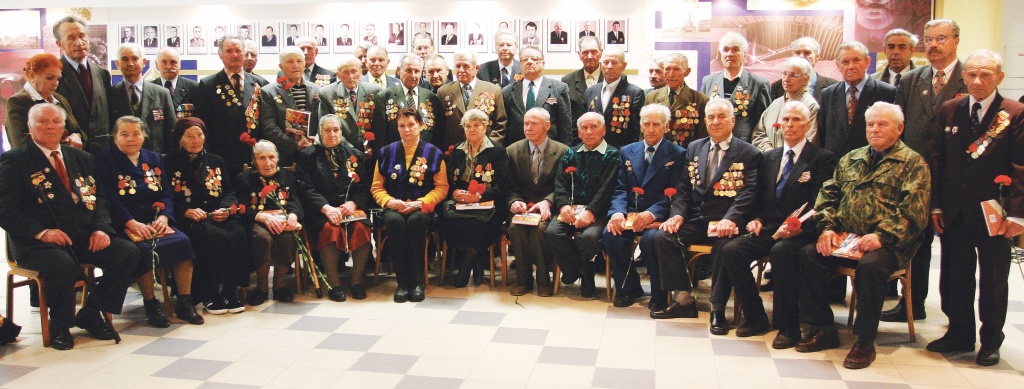
Genuine documents and different uniforms, tools and accessories of the past and the present reveal the history of Belaruskali showing the greatness of labor, talent and activity of workers and office employees in creating a new industrial sector in the Republic of Belarus and labour achievements of the staff throughout the history of the company.


